Arado Ar 96 TrainerDuring World War II Ar-96 was one of the most technically advanced and modern training aircraft, I think this type of aircraft would be very useful in our game ;
An additional advantage in favor of this aircraft is that we already have planes with similar construction in the game Ar-196 and
Arado 196 T-1
https://www.sas1946.com/main/index.php/topic,41667.0.html
History
The Arado Ar 96 was a successful single-engine, two -seat advanced trainer used by the German Luftwaffe during and immediately prior to World War II. Designed in 1936 in response to a Reich Air Ministry requirement as a clean, low-wing monoplane of all-metal construction, the Arado trainer was quite modern at the time, using many light alloys. It was designed to fill the gap between the biplanes employed for basic training and the advanced monoplane fighters just entering service, in particular the Messerschmitt Bf 109.
The Arado Ar 96 prototype flew for the first time in 1937, powered by a 179 kW (240 hp) Argus As 10c engine.
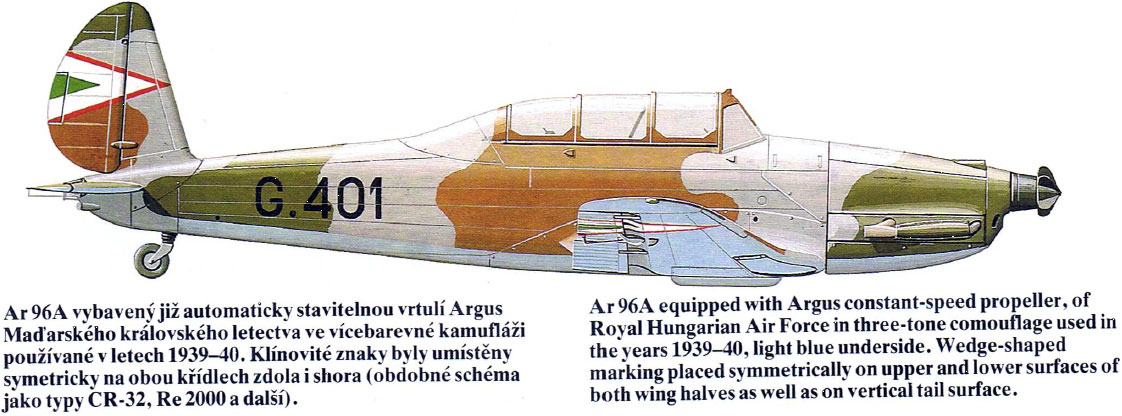
The Ar 96 A-1 was initially considered underpowered and production moved on to the B-series, which was fitted with a more powerful Argus As 410 engine capable of 465 hp. The B also had a longer fuselage to allow it to carry more fuel. The B-1 and B-2 were the main production versions, with the B-2 ushering in the inclusion of a single MG 17 7.92mm machine gun in the starboard upper engine cowling. The B-3 was identical to the B-2 but produced in much smaller numbers.
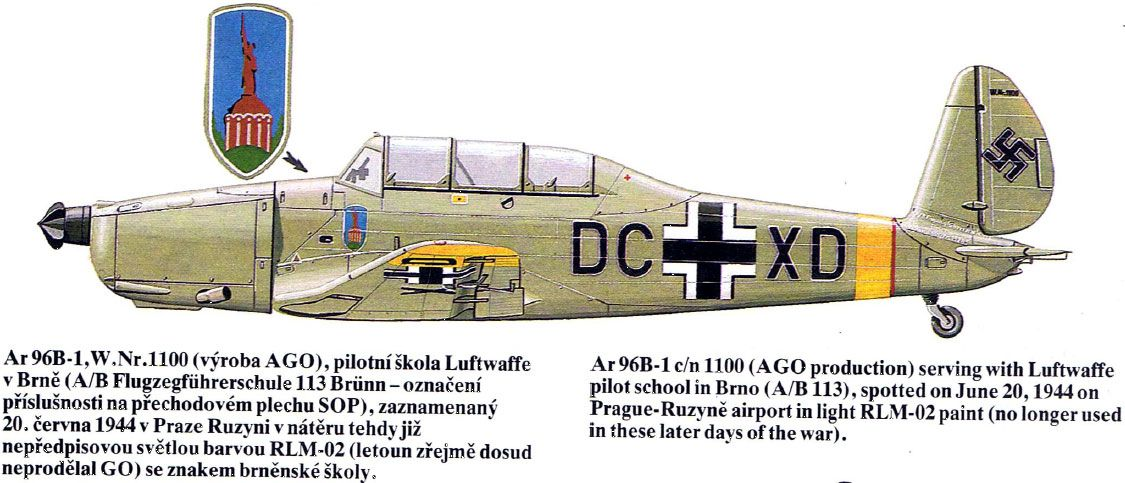
In terms of layout, the instructor and pupil sat in tandem seats under a long glazed canopy. The V1 was powered by an Argus As 10C inline engine and had the typical Arado tail, with the horizontal surfaces at the very rear and a tall fin and rudder just in front of them. On the V1 prototype, the wheels retracted outwards, but this meant that the gap between the wheels was quite small, and so on all production aircraft the wheels retracted inwards. This thoughtful change addressed a critical failing that the Arado prototype shared with the Bf 109, a small wheel-base that contributed significantly to ground accidents resulting in damaged aircraft, mostly on landings. Left unchanged on the 109, it hampered the type’s operational strength throughout the war.

The Arado Ar 96B was used by the A/B pilot training schools, and also by thirteen fighter training wings, the fighter replacement units and the officer cadet schools. 110 were used by the Royal Hungarian Air Force and four in Slovakia. The most dramatic moment in the aircraft’s service career came on April 28, 1945 when Hanna Reitsch used an Ar 96 to fly Ritter von Greim, the new Commander-in-Chief of the Luftwaffe out of the ruins of Berlin.
A total of 11,546 aircraft were produced, although very few were built by Arado. Junkers’ Ago subsidiary did most of the work until 1941, before being replaced by the Czech firm Avia. An improved Ar 296 was planned but abandoned, while the Ar 396, which used fewer strategic materials, failed to arrive in time to serve with the Luftwaffe.
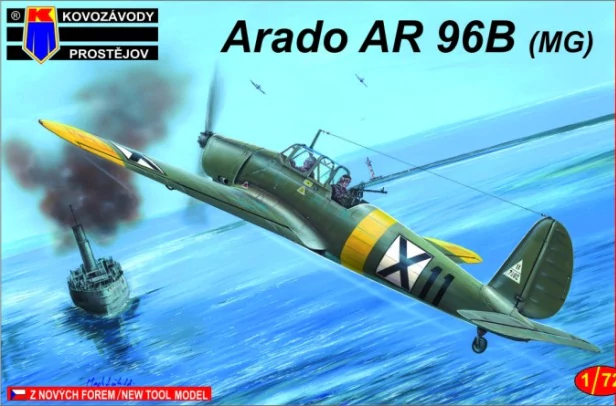
The Arado Ar 96 is a single-engine two-seat trainer aircraft produced by the German manufacturer Arado Flugzeugwerke GmbH. The Ar 96 was the standard advanced trainer aircraft of the German Luftwaffe during WWII.
The Arado Ar 96 was built by AGO Flugzeugwerke, a former Junkers subsidiary and later by the czech manufacturers Avia and Letov. Post-war production by Avia continued until 1948 as Avia C.2B.
Crew 2
Propulsion 1 Piston Engine
Engine Model Argus As 410A-1
Engine Power 342 kW 459 hp
max. Cruise Speed 294 km/h 159 kts 183 mph
Speed 330 km/h 178 kts 205 mph
Service Ceiling 7.100 m 23.294 ft
Range 991 km 535 NM 616 mi.
Empty Weight 1.295 kg 2.855 lbs
max. Takeoff Weight 1.700 kg 3.748 lbs
Wing Span 11,00 m 36 ft 1 in
Wing Area 17,1 m² 184 ft²
Length 9,10 m 29 ft 10 in
Height 2,60 m 8 ft 6 in
First Flight 1938
Production Status out of production
Production Range 19-39-1948 (Avia C.2B)
Total Production 11546
Data for (Version) Arado Ar 96B
Variants Avia C.2B
By Kaboldy - Own work:
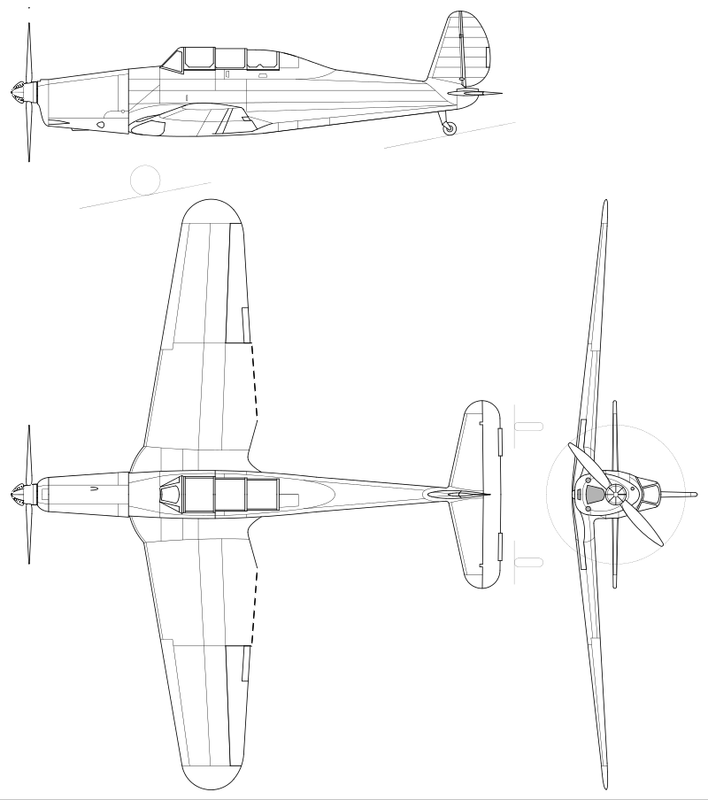
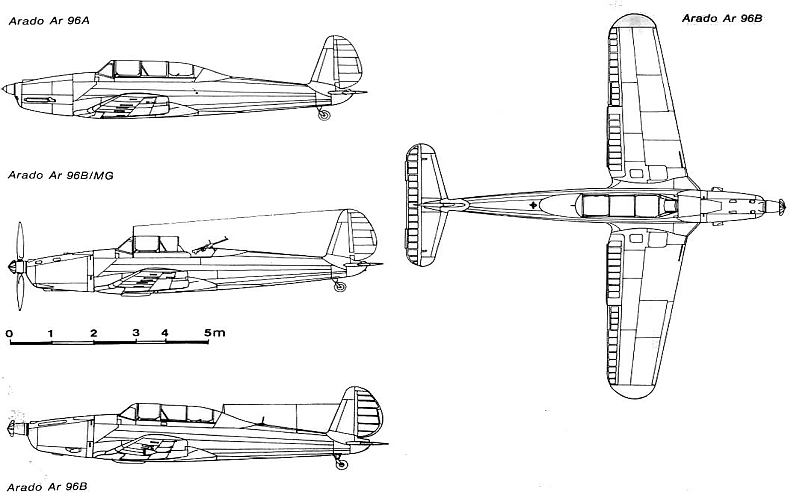
Specifications (Arado Ar 96B-2)
Data from Aircraft of the Third Reich Vol.1
General characteristics
Crew: two
Length: 9.1 m (29 ft 10 in)
Ar 396A-1: 9.3 m (31 ft)
Wingspan: 11 m (36 ft 1 in)
Height: 2.6 m (8 ft 6 in)
Ar 396A-1: 2.45 m (8 ft)
Wing area: 17.1 m2 (184 sq ft)
Ar 396A-1: 18.3 m2 (197 sq ft)
Empty weight: 1,295 kg (2,855 lb)
Ar 396A-1: 1,643 kg (3,622 lb)
Max takeoff weight: 1,700 kg (3,748 lb)
Ar 396A-1: 2,060 kg (4,542 lb)
Powerplant: 1 × Argus As 410A-1 inverted V-12 air-cooled piston engine, 347 kW (465 hp)
Ar 396A-1: 1 x 433 kW (581 hp) Argus As 411MA inverted V-12 air-cooled piston engine
Propellers: 2-bladed variable pitch metal propeller
Performance
Maximum speed: 330 km/h (205 mph; 178 kn) at sea level
Cruise speed: 295 km/h (183 mph; 159 kn)
Ar 396A-1: 275 km/h (171 mph) at sea level
Range: 990 km (615 mi; 535 nmi)
Ar 396A-1: 600 km (373 mi)
Service ceiling: 7,100 m (23,300 ft)
Ar 396A-1: 6,900 m (22,638 ft)
Rate of climb: 5.083 m/s (1,000.6 ft/min)
Time to altitude:
Ar 396A-1: 4,000 m (13,123 ft) in 10 minutes 18 seconds
Armament
1 × 7.92 mm (0.312 in) MG 17 machine gun
Ar 396A-1: 1 × 7.92 mm (0.312 in) MG 17 machine gun + 2 x 50 kg (110 lb) bombs on underwing racks
Primary users Luftwaffe
Czechoslovakian Air Force
Hungarian Air Force
Romanian Air Force
Armee de l'Air
Slovak Air Force
Bulgarian Air Force
Number built ~ 3,500
Arado Ar-396/ SIPA S.121The SIPA 111A was a French-built Arado 396, and was differently known as the S.10, S.11, S.111, S.12 or even S.121 in French service. Three squadrons saw service in Algeria during the mid-1950s.

The S.10 was the French version of the Arado Ar.396, built as the company's first post-war product. Twenty-eight produced.
The S.11 (50 built for the French Air Force) and S.111 were modified versions of the S.10 two-seat advanced trainer, fitted with Renault 125 engines (440kW SNECMA S-12-SO2-3H, French-built Argus As 411).
The S.12 was similar to the S.11 but was constructed entirely of metal; 52 S.12s were built for the French Air Force together with 58 S.121 lightweight derivatives. For use in Algeria, a number of S.111s and S.121s were modified to carry rockets and bombs for ground attack under the designations S.111A and S.121 A.
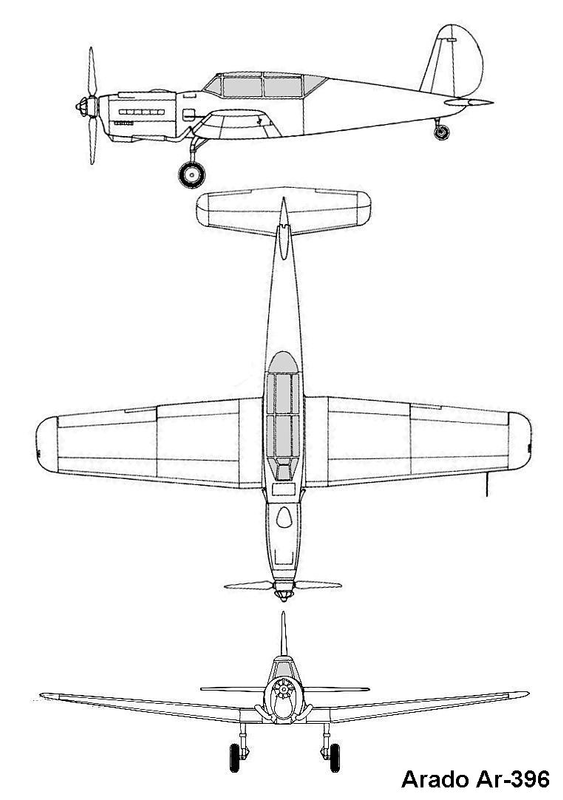
interesting article (fr)
http://avions-de-la-guerre-d-algerie.over-blog.com/article-20607309.htmlPiotrek
 Author
Topic: Arado Ar-96/Avia C-2B/Arado Ar-396/SIPA S.121 (Read 7609 times)
Author
Topic: Arado Ar-96/Avia C-2B/Arado Ar-396/SIPA S.121 (Read 7609 times)


